 |
The Mummies of Xinjiang
The Tarim mummies are a series of mummies discovered in the Tarim Basin in present-day Xinjiang, China, which date from 1800 B.C. to 200 A.D. Some of the mummies are frequently associated with the presence of the Indo-European Tocharian languages in the Tarim Basin although the evidence is not totally conclusive.
The Archeological record
At the beginning of the 20th century European explorers such as Sven Hedin, Albert von Le Coq and Sir Aurel Stein all recounted their discoveries of desiccated bodies in their search for antiquities in Central Asia. Since then, many other mummies have been found and analysed, most of them now displayed in the museums of Xinjiang. Most of these mummies were found on the eastern (around the area of Lopnur, Subeshi near Turpan, Kroran, Kumul) and southern (Khotan, Niya, Qiemo) edge of the Tarim Basin.
The earliest Tarim mummies, found at Qäwrighul and dated to 1800 B.C, are of a Caucasoid physical type whose closest affiliation is to the Bronze Age populations of southern Siberia, Kazakhstan, Central Asia, and the Lower Volga. The cemetery at Yanbulaq contained 29 mummies which date from 1100–500 B.C, of which 21 are Mongoloid — the earliest Mongoloid mummies found in the Tarim Basin — and 8 of which are of the same Caucasoid physical type found at Qäwrighul.
Notable mummies are the tall, red-haired "Chärchän man" or the "Ur-David" (1000 B.C.); his son, a small 1-year-old baby with blond hair protruding from under a red and blue felt cap, and blue stones in place of the eyes; the "Hami Mummy" (c. 1400–800 B.C.), a "red-headed beauty" found in Qizilchoqa; and the "Witches of Subeshi" (4th or 3rd century B.C.), who wore two foot long black felt conical hats with a flat brim. Also found at Subeshi was a man with traces of a surgical operation on his neck; the incision is sewn up with sutures made of horsehair.
The Loulan Beauty
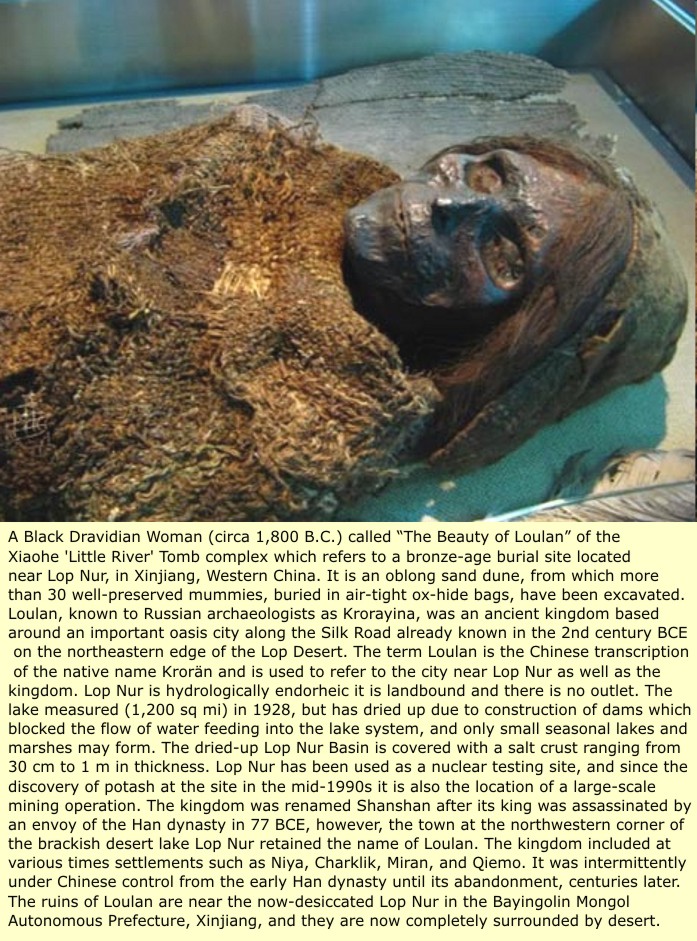 |
| Wiki:A 2008 study by Jilin University showed that the Yuansha population has relatively close relationships with the modern populations of South Central Asia and Indus Valley, as well as with the ancient population of Chawuhu. In 2007 the Chinese government allowed a National Geographic Society team headed by Spencer Wells to examine the mummies' DNA. Wells was able to extract undegraded DNA from the internal tissues. The scientists extracted enough material to suggest the Tarim Basin was continually inhabited from 2000 BCE to 300 BCE and preliminary results indicate the people, rather than having a single origin, originated from Europe, Mesopotamia, Indus Valley and other regions yet to be determined.[citation needed] In years 2009-2015, the remains of in total 92 individuals found at the Xiaohe Tomb complex were analyzed for Y-DNA and mtDNA markers. Genetic analyses of the mummies showed that the Xiaohe people were an admixture from populations originating from both the West and the East. The maternal lineages of the Xiaohe people originated from both East Asia and West Eurasia, whereas the paternal lineages all originated from West Eurasia. Mitochondrial DNA analysis showed that maternal lineages carried by the people at Xiaohe included mtDNA haplogroups H, K, U5, U7, U2e, T and R*, which are now most common in West Eurasia. Also found were haplogroups common in modern populations from East Asia: B5, D and G2a. Haplogroups now common in Central Asian or Siberian populations included: C4 and C5. Haplogroups later regarded as typically South Asian includedM5 and M*. The paternal lines of male remains surveyed nearly all – 11 out of 12, or around 92% – belonged to Y-DNA haplogroup R1a1, which are now most common in West Eurasia; the other belonged to the exceptionally rare paragroup K* (M9). The geographic location of this admixing is unknown, although south Siberia is likely. According to a comment posted on 18 July 2014 by one of study co-authors - prof. Hui Zhou - Xiaohe R1a1 lineages does not belong to R-Z93 branch and the study supports the "steppe hypothesis". It has been asserted that the textiles found with the mummies are of an early European textile type based on close similarities to fragmentary textiles found in salt mines in Austria, dating from the second millennium BCE. Anthropologist Irene Good, a specialist in early Eurasian textiles, noted the woven diagonal twill pattern indicated the use of a rather sophisticated loom and said that the textile is "the easternmost known example of this kind of weaving technique." Mair claims that "the earliest mummies in the Tarim Basin were exclusively Caucasoid, or Europoid" with east Asian migrants arriving in the eastern portions of the Tarim Basin around 3,000 years ago while the Uyghur peoples arrived around the year 842. In trying to trace the origins of these populations, Victor Mair's team suggested that they may have arrived in the region by way of the Pamir Mountains about 5,000 years ago. Mair has claimed that: The new finds are also forcing a reexamination of old Chinese books that describe historical or legendary figures of great height, with deep-set blue or green eyes, long noses, full beards, and red or blond hair. Scholars have traditionally scoffed at these accounts, but it now seems that they may be accurate. Chinese historian Ji Xianlin says China "supported and admired" research by foreign experts into the mummies. "However, within China a small group of ethnic separatists have taken advantage of this opportunity to stir up trouble and are acting like buffoons. Some of them have even styled themselves the descendants of these ancient 'white people' with the aim of dividing the motherland. But these perverse acts will not succeed". Barber addresses these claims by noting that "[The Loulan Beauty] is scarcely closer to 'Turkic' in her anthropological type than she is to Han Chinese. The body and facial forms associated with Turks and Mongols began to appear in the Tarim cemeteries only in the first millennium BCE, fifteen hundred years after this woman lived. Due to the "fear of fuelling separatist currents", the Xinjiang museum, regardless of dating, displays all their mummies, both Tarim and Han, together. |
Tarim mummies
 |
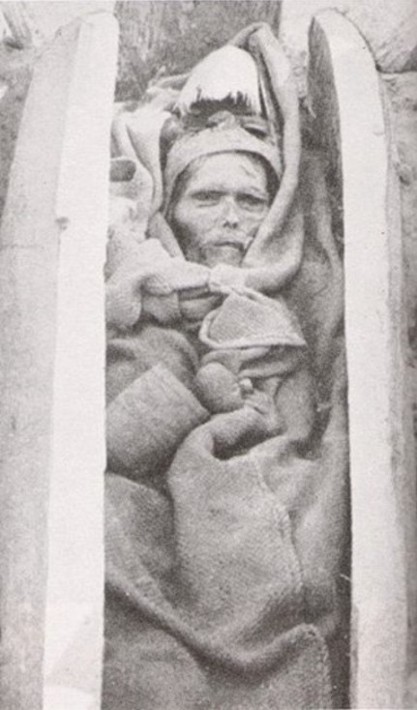 |
|
Many of the mummies have been found in very good condition, owing to the dryness of the desert and the desiccation it produced in the corpses. The mummies share many typical Caucasoid body features (elongated bodies, angular faces, recessed eyes), and many of them have their hair physically intact, ranging in color from blond to red to deep brown, and generally long, curly and braided. It is not known whether their hair has been bleached by internment in salt. Their costumes, and especially textiles, may indicate a common origin with Indo-European neolithic clothing techniques or a common low-level textile technology. Chärchän man wore a red twill tunic and tartan leggings.
Genetic links
DNA sequence data shows that the mummies had a Haplogroup R1a (Y-DNA) characteristic of western Eurasia in the area of East-Central Europe, Central Asia and Indus Valley.
A team of Chinese and American researchers working in Sweden tested DNA from 52 separate mummies, including the mummy denoted "Beauty of Loulan." By genetically mapping the mummies' origins, the researchers confirmed the theory that these mummies were of West Eurasian descent. Victor Mair, a University of Pennsylvania professor and project leader for the team that did the genetic mapping, commented that these studies were: extremely important because they link up eastern and western Eurasia (NOT Europe) at a formative stage of civilization (Bronze Age and early Iron Age) in a much closer way than has ever been done before. An earlier study by Jilin University had found an mtDNA haplotype characteristic of Western Eurasian populations with Europoid genes.
Note; still at this late date, we have White scientists trying to find a way to suggest that these people CAME from Europe, as opposed to their kind GOING to Europe. They have been unsuccessful in this, because it didn't happen, and the evidence that it DIDN'T happen is overwhelming! But since when has the truth ever stopped the White man from telling a good lie.
Mair states that "the earliest mummies in the Tarim Basin were exclusively Caucasoid, with east Asian (Chinese) migrants arriving in the eastern portions of the Tarim Basin around 3,000 years ago, while the Uyghur peoples arrived around the year 842. In trying to trace the origins of these populations, Victor Mair's team suggested that they may have arrived in the region by way of the Pamir Mountains about 5,000 years ago. This evidence remains controversial. It refutes the contemporary nationalist claims of the present-day Uyghur peoples who claim that they are the indigenous people of Xinjiang, rather than the Han Chinese. In comparing the DNA of the mummies to that of modern day Uyghur peoples, Mair's team found some genetic similarities with the mummies, but "no direct links". It should be noted that the Chinese are in a bind politically, if they acknowledge that the Uyghur peoples are indigenous to Xinjiang, which they probably are: the 842 timeframe being probably a political tactic, then the Chinese have no right to the land.
Modern Uyghur People
 | 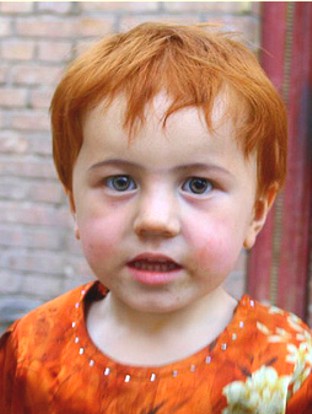 |  | ||
 |  |  |
The new finds are also forcing a reexamination of old Chinese books that describe historical or legendary figures of great height, with deep-set blue or green eyes, long noses, full beards, and red or blond hair. Scholars have traditionally scoffed at these accounts, but it now seems that they may be accurate. Chinese scientists were initially hesitant to provide access to DNA samples because they were sensitive about the claims of the nationalist Uyghur who claim the Loulan Beauty as their symbol, and to prevent a pillaging of national monuments by foreigners.
Chinese historian Ji Xianlin says China "supported and admired" research by foreign experts into the mummies. However, within China a small group of ethnic separatists have styled themselves the descendants of these ancient people". Due to the "fear of fueling separatist currents" the Xinjiang museum, regardless of dating, displays all their mummies both Tarim and Han, together.
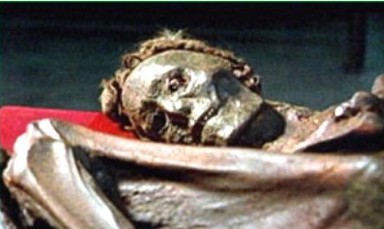
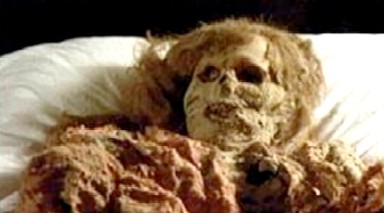
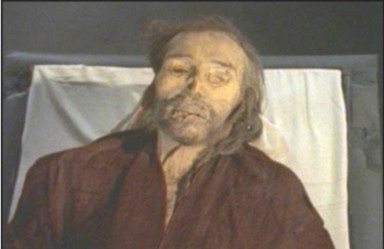
No comments:
Post a Comment
Comments always welcome!